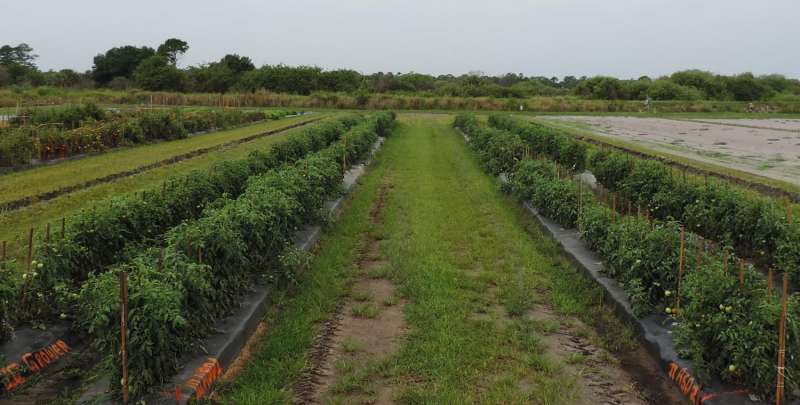Sustainable alternative to methyl bromide for tomato production

Following the phase out of methyl bromide, scientists continue to explore effective, viable, and more sustainable options for vegetable crop production. Among nonchemical alternatives, anaerobic soil disinfestation (ASD) is considered to be one of the most promising methods. ASD has been determined to be effective with a range of crops and environments against several soilborne fungal and bacterial plant diseases, plant-parasitic nematodes, and weeds.
A study in the June 2016 issue of HortScience focused on the effects of ASD in an open-field, fresh-market tomato production system. Field studies were conducted to evaluate and compare ASD with chemical soil fumigation (CSF) treatments for controlling weeds and nematodes, as well as for influence on tomato fruit yield and quality. In experiments conducted in southwestern (Immokalee) and northern Florida (Citra), conventional CSF was compared with two ASD treatments, which consisted of amending the soil with 22 Mg·ha-1 of composted poultry litter and two rates of molasses (13.9 and 27.7 m3·ha-1) as a carbon source.
Analyses showed that the application of ASD did not negatively affect commercial tomato fruit quality, and that quality and the mineral content of fruit produced with ASD was comparable or higher than that of fruit produced in CSF plots.
In both locations, the application of ASD provided a level of root-knot nematode control equivalent to, or more effective, than the CSF. Additional results showed that, in Immokalee, the CSF provided the most significant weed control, "but ASD treatments also suppressed weeds enough to prevent an impact on yield," the authors said. In Citra, all treatments, including the CSF, provided poor weed control relative to the Immokalee site.
"Overall, the results of the two locations demonstrate that the ASD technique may be a valid and sustainable alternative to the conventional CSF, and could be transferred at commercial level," the authors said. "Molasses rates showed similar performance in terms of root-knot nematode and weed control, yield, and fruit quality; therefore, the lower molasses rate could be suggested to reduce the cost of the ASD treatment."
On-going research is focused on substitutions for composted broiler litter and minimizing nutrient inputs in an ASD system.
More information: The complete study and abstract are available on the ASHS HortScience electronic journal web site: hortsci.ashspublications.org/c … nt/51/6/703.abstract
Journal information: HortScience
Provided by American Society for Horticultural Science
















